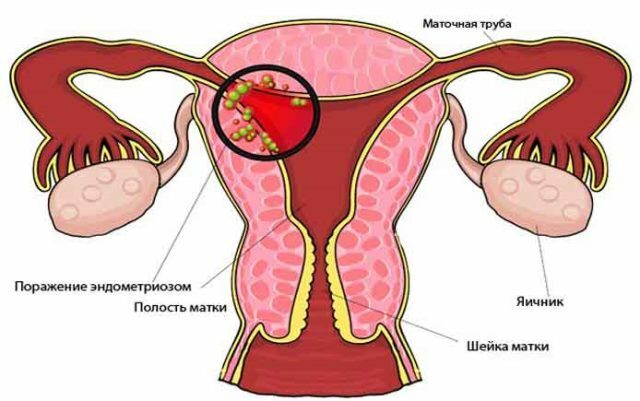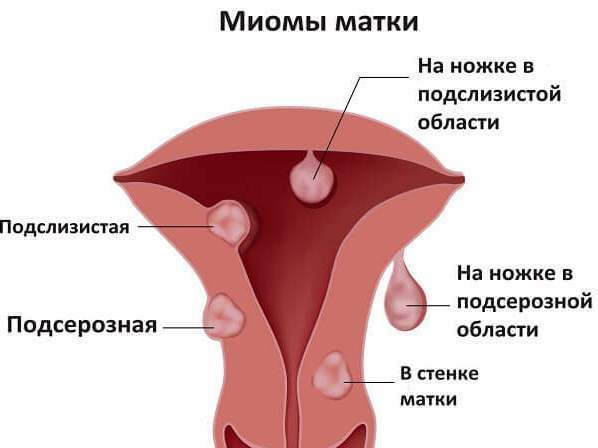Women have to face unpleasant, painful sensations in the lower abdomen. Most often they occur on the eve and in the first days of menstruation, as well as after their termination. The reasons for the development of such conditions are many: from the features of the location of the organ to serious diseases, including cancer and not related to gynecology. How to understand what triggered the pain in the lower abdomen after menstruation, what to do in this case?
The main causes of pain
Self-diagnosis of the causes of pain can not always be. Some women believe that they "feel" how this or that organ hurts. In fact, this intuition often fails.
Lower abdominal pain can be triggered not only by gynecological pathology, but also by problems with the intestines, urinary system and some other conditions. It's up to you to understand what pathological process caused unpleasant sensations, only a specialist after a complex examination and examination can.Endometriosis
Endometriosis is the leader in the incidence of pain syndrome among all gynecological diseases. There are both its hidden forms, and quite common.

So, the pain in this case has a very different clinical picture. It can be tolerant, pulling or dagger, sharp, in which a woman can even lose consciousness. Often the pain is described as "sharp in the area of the anus".
In women with endometriosis, spotting is more common in the middle of the cycle. Also for this disease is characterized by soreness during sexual intercourse, sometimes with a change of position it can pass - it all depends on the number of foci and their location.
Look at the video about endometriosis:
Ovarian neoplasms
Sometimes a woman can not guess about the existence of a cyst on the ovaries until a certain point, as she does not bother. A minor aching pain in the lower abdomen, she writes off on something else. For the timely detection of pathology, a gynecologist should be regularly treated, since the pathology of the ovaries is the most insidious disease. With a small number of complaints, the disease progresses rapidly, including malignant tumors.
With the ovarian cyst, the pain is usually painful, more to the right or left( depending on the location of the lesion).It can intensify after physical exertion, sudden movements, sexual contacts, psycho-emotional overstrain.
In case of acute pain, dizziness, low blood pressure, you should seek medical help, as this may be symptoms of rupture of the cyst and accompanying intraabdominal bleeding.
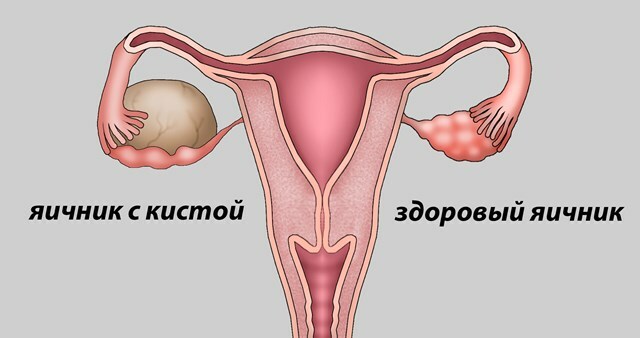
Hysteromyoma
If a woman has ever been diagnosed with uterine fibroids, she can also give pulling pains in the lower abdomen after menstruation. The fact is that for the evacuation of menstrual blood, the myometrium is rapidly shrinking. This can cause a violation of the blood supply of the myomatous node, especially large ones and located on the stem - with subserous growth. The most unfavorable outcome of this situation is necrosis of education, which requires immediate surgical intervention.

Against the background of pain, body temperature may rise to subfebrile values, nausea may occur, and one-time vomiting may occur.
With a gynecological examination, the uterus is painful when touched, and ultrasound imaging helps confirm the diagnosis.
Inflammation of the genitals
Aching pain in the lower abdomen after menstruation can be caused by inflammatory diseases in different parts of the reproductive system. Perhaps the following:
- vulvitis( infection of the vulva, small and large labia);
- vaginitis( localization in the vagina);
- cervicitis( inflammation of the cervical canal);
- endometritis( infection within the cavity);
- adnexitis( inflammation of the appendages).
As a rule, several departments are affected at the same time. The most common cause is sexually transmitted diseases. At the moment when the woman feels the pulling pains in the lower abdomen, the infection has already "ascended" from the vestibule to the appendages and caused these unpleasant sensations. Depending on the state of immunity and the type of infection, the clinical picture also differs. So, it can be both acute sudden pain that will lead a girl to a test, and aching, with which you can go a month or more, if you do not pay proper attention to your health.
Together with pain, in most cases, pathological vaginal discharge occurs - curdled, abundant white, purulent, foamy, green, with a trace of blood, etc. There is also burning, irritation, itching, redness of the mucous membranes and other symptoms.
Body temperature rises extremely rarely, usually general health does not suffer.
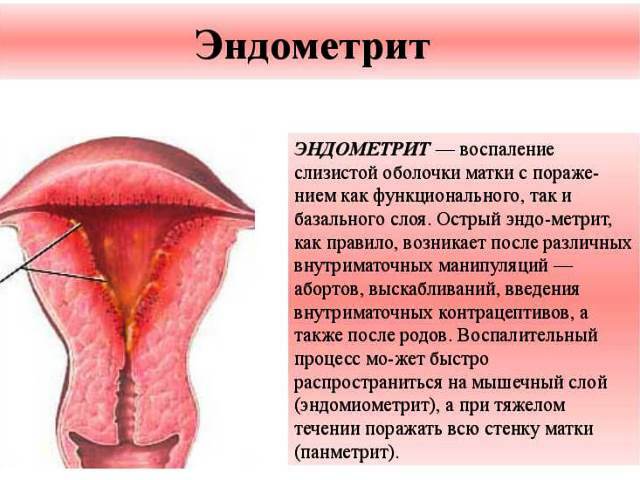
Pregnancy
If a woman has pains in the lower abdomen after menstruation and the recurrence is repeated, it is necessary to exclude pregnancy, including ectopic pregnancy. As a rule, menstruation in these cases is atypical for this girl: less abundant or very scarce, not so long, painless, etc.
What is accepted for critical days, in fact, may be a threat of abortion or a symptom of an ectopic. Therefore, with abnormal bloody discharge and pain in the lower abdomen, it is necessary to exclude the fact of the occurred conception. To do this, you need to do a urine test, but it is better to take a blood test for HCG, it is more sensitive and even on a small date will show a reliable result.
Navy
If a woman has a spiral inside the uterine cavity, she may be displaced during her period, which leads to aching pain in the lower abdomen. The risk is especially high in those with a high number of menstrual periods. The fact is that during critical days the cervix is slightly opened in order to ensure unimpeded flow of blood. This helps to change the position of the spiral and even its loss.
The pains that occur during this, usually gradually increase, passing a little after taking antispasmodic drugs.
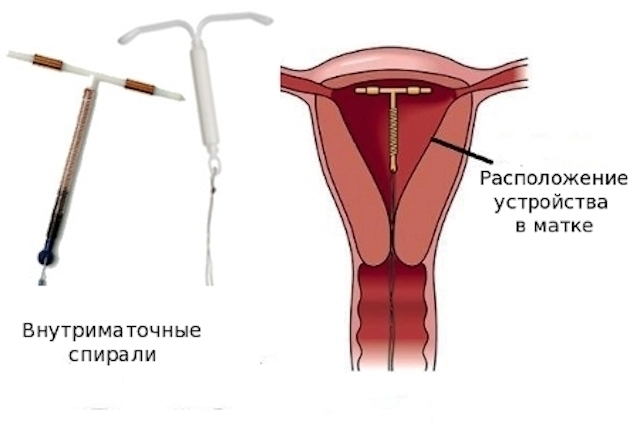
Diseases of the bladder and urethra
Do not forget that in the lower abdomen, in addition to the genitals, there are also others, the pathology of which can cause unpleasant sensations. Most often it is cystitis, urethritis. Then, against the background of pain, frequent urge to urinate, burning, and rubbing. A banal analysis of urine will help to understand this situation.
In addition, stones in the bladder, tumors can give pains in the lower abdomen, but they most likely will not be associated with the menstrual cycle.
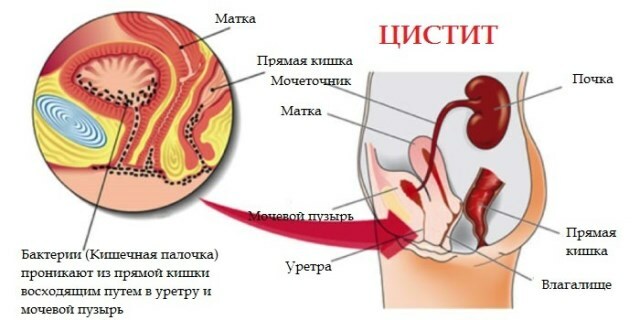
Intestinal pathology
Pain and lower abdominal pain may occur in colitis, increased gas production, including when eating a diet. Most often, these conditions occur in women in menopause or after extensive gynecological operations, when the uterus and appendages are atrophic and small in size or absent, and their place is occupied by intestinal loops.
Do not forget about the malignant tumors of the sigmoid region, the rectum. Often the first symptoms in this case are pulling pains in the lower abdomen, perineum and sacrum.
Exacerbations of hemorrhoids, anal fissures, paraproctitis, which are provoked by menstruation in women, can also give similar symptoms.
Neurological diseases
With the osteochondrosis of the lumbar and sacral parts in the work of a gynecologist you have to face constantly. The fact is that the anatomically nerve endings, leaving the vertebral canal, run in the region of the small pelvis, ending including in the large and small labia. Attack of neuralgia, infringement of roots of a hernia - all this leads to pain in the sacrum, waist and lower abdomen in a woman. Inspection of a gynecologist and a neurologist helps to understand the situation.
Diagnosis
If a woman has abdominal pain after a period of time, the cause of the condition with the greatest certainty can be established only after a thorough examination. The list is set by the doctor, it is better to turn to the gynecologist first, but it is also possible to the neurologist or the therapist.
The most common methods of examination:
- general and biochemical analysis of blood and urine;
- examination of a gynecologist, neurologist, if necessary urologist or oncologist;
- ultrasound examination of the small pelvis, in some cases, MRI or CT;
- study of the contents of the vagina: smears on flora, oncocytology, sowing, etc.
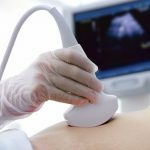 We recommend to read an article on the conduct of ultrasound with monthly. From it you will learn about the indications for the procedure, examination of the chest and abdominal organs, the possibility of diagnosing during menstruation.
We recommend to read an article on the conduct of ultrasound with monthly. From it you will learn about the indications for the procedure, examination of the chest and abdominal organs, the possibility of diagnosing during menstruation.
Methods of treatment
Treatment of pain in the lower abdomen depends on the nature of the revealed pathology. In most cases, conservative therapy can be managed, with the exception of acute conditions( for example, cyst rupture) and cases of detection of cancer processes.
If you have pain in the lower abdomen, a woman can take an antispasmodic or any analgesic drug. But if the sensations are amplified or supplemented by other symptoms( nausea, vomiting, dizziness, bleeding, fever), it is better to seek medical help.
Lower abdominal pain, which is permanent, can indicate serious disorders in the body of a woman. To establish the reasons and appoint the most effective treatment can only be a specialist. After all, often the pains in the lower abdomen a week after the menstrual period, immediately after them or on another day of the cycle, can be completely unrelated to gynecological diseases.

